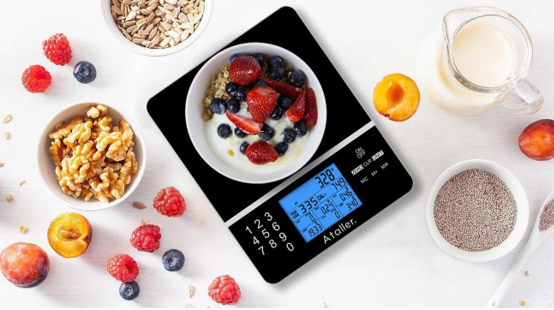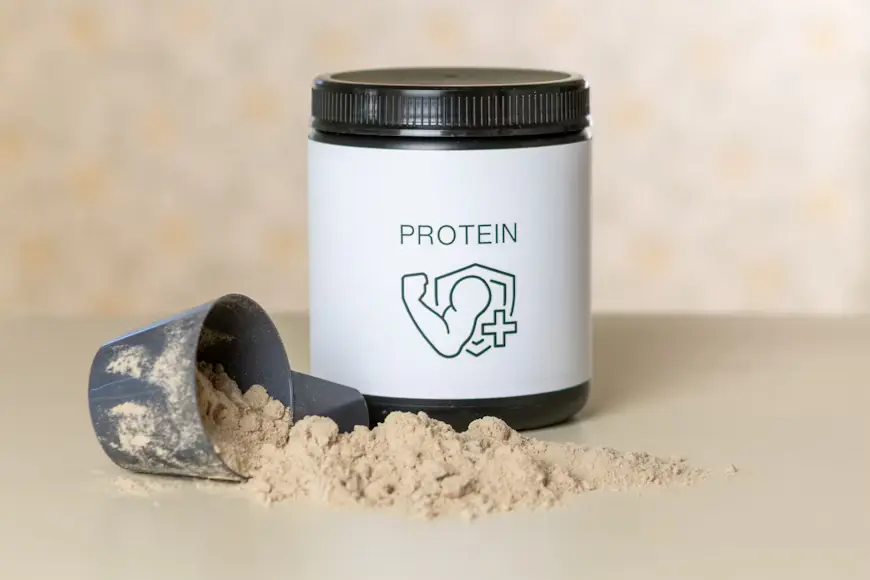Protein Intake Calculator Guide: Stop Guessing Your Daily Protein Needs
Protein Intake Calculator
Find out how much protein you should consume per day!
Table of Contents
Toggle
This calculator utilizes the Mifflin-St Jeor equation which utilizes a systematic review to help users determine protein intake based on individual factors. Keep in mind a healthy diet includes carbohydrates, fats, vitamins and minerals in addition to protein.
Understanding our Protein Intake Calculator:
A protein intake calculator provides personalized recommendations based on individual factors such as age, weight, activity level, and fitness goals. By using a protein intake calculator, individuals can ensure they are consuming the optimal amount of protein to support muscle growth, repair, and overall health. This personalized approach helps individuals tailor their nutrition plan to meet their specific needs, whether they are aiming to build muscle, lose weight, or improve athletic performance. Additionally, a protein intake calculator can help individuals track their progress and make adjustments as needed to achieve their desired outcomes effectively.
Are you still guessing how much protein your body actually needs? Most people follow generic advice, but the protein intake calculator provides personalized recommendations based on your specific situation.
According to research, the general recommendation for protein is 0.36 grams per pound of body weight for optimal health with a sedentary lifestyle. However, this number changes significantly for active individuals. In fact, other organizations recommend between 1.2 to 2 grams of protein for every kilogram of body weight per day. For a 150-pound person, that’s between 82 and 136 grams of protein daily.
In this comprehensive guide, we’ll explore how to calculate protein intake accurately whether you’re focused on weight management or muscle gain. We’ll walk through using a daily protein intake calculator, explain protein intake calculators for muscle gain, and provide practical tips to meet your nutritional goals. Instead of relying on guesswork, you’ll learn exactly how to determine your ideal protein consumption based on your age, weight, and activity level.
Why Protein Intake Matters for Your Health
Protein serves as the essential building block of your body, playing a critical role in virtually every tissue and organ. Understanding exactly why this macronutrient matters can help you appreciate the importance of calculating your intake correctly.
Protein’s role in muscle repair and metabolism
Protein is fundamentally the building block of your muscles. When you exercise, especially during strength training, your muscle fibers develop micro-tears that require protein to repair and grow stronger. Research shows that protein intake between 1.6-1.7 g/kg of body weight is optimal for younger adults seeking muscle growth. For adults over 65, a slightly lower amount of 1.2-1.59 g/kg helps combat age-related muscle loss.
Furthermore, protein affects your metabolism in profound ways. Your body expends 20-30% of protein’s calories just to digest and process it, compared to only 5-10% for carbohydrates and a mere 0-3% for fats. This increased energy expenditure, known as the thermic effect of food, means protein naturally helps boost your daily calorie burn.
How protein supports weight management
Protein stands out as a powerful ally for weight management through multiple mechanisms. When consumed adequately, protein increases feelings of fullness while reducing hunger sensations. This satiety effect comes from protein’s impact on appetite-regulating hormones—increasing levels of GLP-1, PYY, and cholecystokinin while reducing ghrelin, your hunger hormone.
Additionally, one striking study showed that participants who increased their protein intake to 30% of total calories naturally reduced their daily consumption by 441 calories without intentionally restricting food. Over 12 weeks, this led to an impressive average weight loss of 11 pounds.
Why guessing your intake can lead to problems
Relying on generic recommendations rather than calculating your specific protein needs can lead to significant issues. Consuming too little protein may result in muscle loss, especially during weight loss periods or with aging. On the flip side, exceeding 2 grams per kilogram daily could be excessive for most people.
Your protein requirements vary dramatically based on several factors:
- Age (needs increase after 40-50 years to prevent sarcopenia)
- Activity level (athletes need 1.2-1.7 g/kg/day)
- Weight loss goals (higher protein preserves muscle during calorie restriction)
- Muscle-building objectives
Using a protein intake calculator eliminates guesswork and provides precise guidance tailored to your unique circumstances.
How the Protein Intake Calculator Works
Understanding exactly how a protein intake calculator determines your needs can help you make the most of this valuable tool. Unlike one-size-fits-all recommendations, these calculators provide personalized guidance based on your unique physiology and goals.
Inputs required: age, weight, sex, activity level, goals
Every effective protein intake calculator requires several key pieces of information. Most notably, you’ll need to input your age, weight, sex, height, activity level, and fitness goals. These factors collectively determine not just your basal metabolic rate (BMR), but ultimately how much protein your body requires to function optimally. Your activity level particularly influences results—ranging from sedentary (minimal exercise) to extremely active (hard daily exercise plus a physical job).
Using the Mifflin St Jeor equation
Behind most protein calculators lies the Mifflin-St Jeor equation, developed in 1990 and now considered the gold standard for determining resting metabolic rate. This formula calculates differently based on gender:
- For men: (10 × weight in kg) + (6.25 × height in cm) – (5 × age) + 5
- For women: (10 × weight in kg) + (6.25 × height in cm) – (5 × age) – 161
Research confirms this equation outperforms alternatives—accurately predicting resting metabolic rate within 10% of measured values for 82% of non-obese individuals.
Adjusting for weight loss, maintenance, or muscle gain
Once your base metabolic rate is established, the calculator applies activity multipliers—ranging from 1.2 (sedentary) to 1.9 (extremely active). From there, adjustments are made based on your goals:
- Weight loss: Calories reduced by 10-20%
- Maintenance: No adjustment to calculated needs
- Muscle gain: Additional 500 calories added
How to interpret your daily protein intake result
Your final result typically shows daily protein needs in grams. For muscle building, look for recommendations between 1.6–2.2 g/kg if at a healthy weight, or 1.2–1.6 g/kg if overweight. If your goal is fat loss, ranges of 1.6–2.4 g/kg (healthy weight) or 1.2–2.4 g/kg (overweight) are generally recommended. Remember that these figures represent daily targets that should ideally be spread across multiple meals throughout the day.
How to Calculate Protein in Your Meals
Once you’ve determined your protein target, the next crucial step is tracking what actually goes on your plate. Accurately measuring your protein intake ensures you’re meeting your calculated needs without guessing.
Reading nutrition labels correctly
Initially, check the serving size at the top of any Nutrition Facts label all values listed apply only to this amount. If you consume twice the serving size, you’ll need to double all nutrient values. Look specifically for protein content, typically listed toward the bottom. The Percent Daily Value (%DV) helps determine if a food is high (20%+) or low (5% or less) in protein.
Using a food scale for accuracy
For optimal precision, weigh foods in grams rather than using measuring cups. Place your dish on the scale, press the “tare” button to reset to zero, then add food. When weighing protein sources specifically, measure raw whenever possible a 4 oz raw chicken breast contains approximately 26g protein, whereas cooked values may vary due to water loss.
Tracking with apps like MyFitnessPal
After weighing your food, log it in tracking apps like MyFitnessPal or MacrosFirst. Simply search for your food, select the verified option (look for green checkmarks), enter the exact weight, and the app calculates your protein automatically. These apps also show your daily progress toward your protein goal.
Estimating protein in home-cooked meals
For homemade dishes, follow these steps:
- List all ingredients and their quantities
- Find nutritional information for each ingredient
- Multiply nutritional values by quantities used
- Add all values together
- Divide by number of servings
Alternatively, use recipe calculators like MyFitnessPal’s Recipe Nutrition Calculator to simplify this process.
Best Practices to Meet Your Daily Protein Needs
Meeting your calculated protein needs requires strategic food choices and consistent planning. Let’s explore practical ways to hit your targets effectively.
High-protein foods by category
Incorporating diverse protein sources ensures optimal nutrition. Animal-based complete proteins include lean meats (chicken breast, turkey, lean beef), fish (salmon, tuna), eggs, and dairy products (Greek yogurt, cottage cheese). Plant-based options include beans, lentils, chickpeas, quinoa, tofu, tempeh, nuts, and seeds. Fish offers approximately 22 grams of protein per 3.5-ounce serving—equivalent to nearly four eggs.
Meal planning tips for consistent intake
Distribute protein throughout the day rather than consuming it all at once. Aim for 20-30 grams per meal to maintain muscle health and control hunger. Starting your day with high-protein breakfast options like eggs, Greek yogurt, or cottage cheese sets you up for success. Meal prepping proteins ahead of time ensures consistent intake even during busy weeks.
Protein timing: pre/post workout strategies
Although the “anabolic window” isn’t as narrow as once believed, protein timing still matters. Research shows consuming high-quality protein 4-6 hours apart, particularly before and after exercise, optimizes muscle mass gains. The anabolic window may extend to 5-6 hours surrounding training rather than just the immediate post-workout period. Consuming 0.4-0.5g/kg of lean body mass (typically 20-40g) around workouts supports optimal muscle adaptation.
Vegetarian and vegan protein combinations
Since most plant proteins are incomplete, combining complementary sources creates complete protein profiles. Effective combinations include:
- Grains + legumes (rice and beans, whole wheat bread and peanut butter)
- Nuts/seeds + legumes (hummus with tahini, lentils with almonds)
- Various vegetables + grains or nuts
Complete plant proteins include quinoa, soy products, hemp seeds, chia seeds, buckwheat, and spirulina.
Avoiding common mistakes like over-reliance on supplements
Focus on whole food protein sources before supplements. Consuming excessive protein (beyond 2g/kg daily) provides minimal additional benefits. Signs of inadequate protein intake include constant hunger, weakness, lethargy, and getting sick frequently. Conversely, too much protein can cause constipation, dehydration, and kidney strain in susceptible individuals. Finally, don’t neglect other nutrients—ensure adequate fiber, healthy fats, and vegetables alongside your protein sources.
Conclusion
Calculating your protein intake precisely rather than relying on generic recommendations marks a significant step toward achieving your health and fitness goals. Throughout this guide, we’ve seen how personalized protein calculations based on your age, weight, sex, activity level, and goals provide much more accurate guidance than one-size-fits-all approaches.
Undoubtedly, protein stands as the cornerstone of muscle repair, metabolism enhancement, and effective weight management. The right amount—whether you need 0.8g/kg for general health or up to 2.4g/kg for intense training—can make all the difference in your results. Additionally, spreading your intake throughout the day and timing it around workouts maximizes these benefits.
Remember that meeting your protein targets doesn’t require complicated strategies. Simply familiarize yourself with high-protein foods, learn to read nutrition labels accurately, and use tools like food scales and tracking apps to monitor your intake. Likewise, both animal and plant-based eaters can successfully meet their needs through thoughtful food choices.
After all, the difference between guessing and calculating your protein needs often determines whether you’ll struggle with hunger, experience muscle loss, or fail to see progress—or alternatively, enjoy sustained energy, preserve lean mass, and reach your fitness potential. Therefore, take time today to calculate your personal protein needs and develop a practical plan to meet them consistently. Your body will thank you with improved performance, better recovery, and long-term health benefits.
FAQs:
How much protein do I really need per day?
The amount of protein you need daily depends on factors like your age, weight, sex, activity level, and fitness goals. Generally, sedentary adults need about 0.36 grams per pound of body weight, while active individuals may require 1.2 to 2 grams per kilogram of body weight daily. Using a protein intake calculator can provide a personalized recommendation based on your specific circumstances.
Can eating more protein help me lose weight?
Yes, increasing your protein intake can support weight loss. Protein helps increase feelings of fullness, reduces hunger sensations, and has a higher thermic effect compared to carbohydrates and fats. Studies have shown that people who increase their protein intake to 30% of total calories naturally reduce their daily calorie consumption, which can lead to significant weight loss over time.
How can I accurately track my protein intake?
To accurately track your protein intake, start by reading nutrition labels correctly and using a food scale to weigh your portions. Utilize apps like MyFitnessPal to log your meals and track your daily protein consumption. For home-cooked meals, you can estimate protein content by calculating the nutritional value of individual ingredients or using recipe calculators available in many tracking apps.
What are some high-protein foods I can include in my diet?
High-protein foods include both animal and plant-based sources. Animal-based options include lean meats like chicken breast and turkey, fish such as salmon and tuna, eggs, and dairy products like Greek yogurt and cottage cheese. Plant-based sources include beans, lentils, chickpeas, quinoa, tofu, tempeh, nuts, and seeds. Incorporating a variety of these foods can help you meet your daily protein needs.
Is it better to consume protein before or after a workout?
While the “anabolic window” isn’t as narrow as once believed, protein timing still matters. Research suggests that consuming high-quality protein 4-6 hours apart, particularly before and after exercise, can optimize muscle mass gains. The anabolic window may extend to 5-6 hours surrounding training. Aim to consume about 0.4-0.5g of protein per kilogram of lean body mass (typically 20-40g) around your workouts for optimal muscle adaptation.


![TDEE Calculator: Why Most Calorie Calculations Are Wrong [Expert Analysis]](https://www.fitnessmentors.com/wp-content/uploads/2025/10/TDEE-Calculator-Why-Most-Calorie-Calculations-Are-Wrong.webp)

